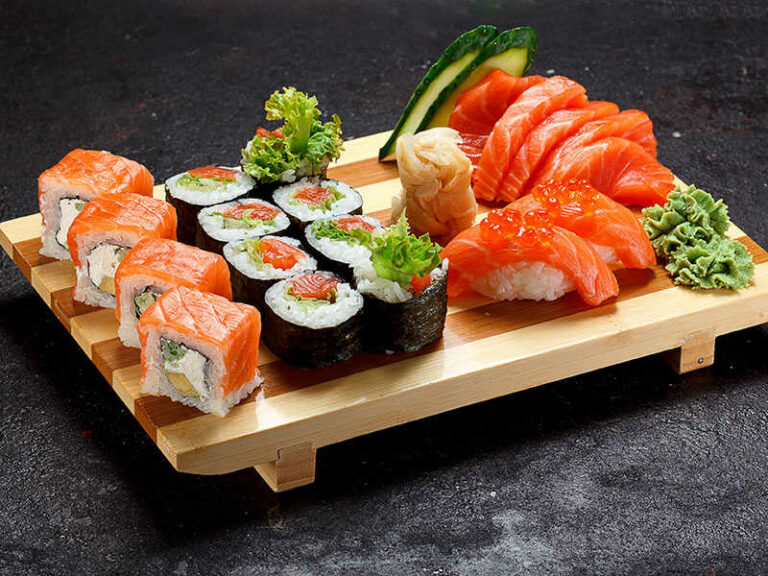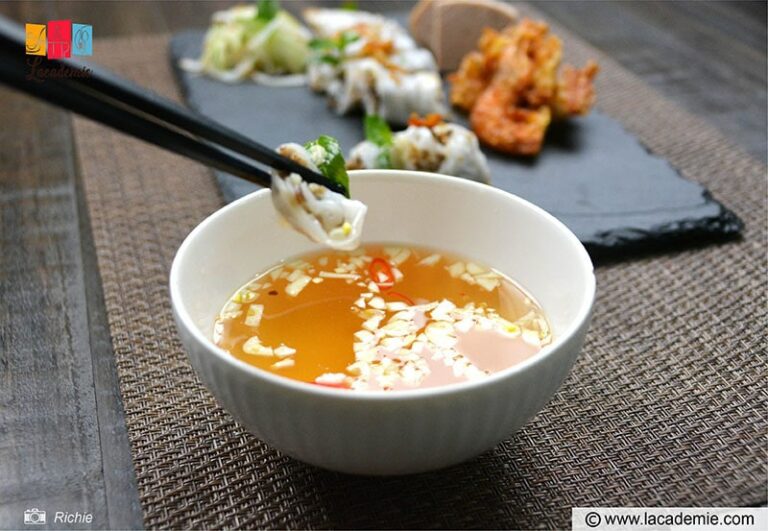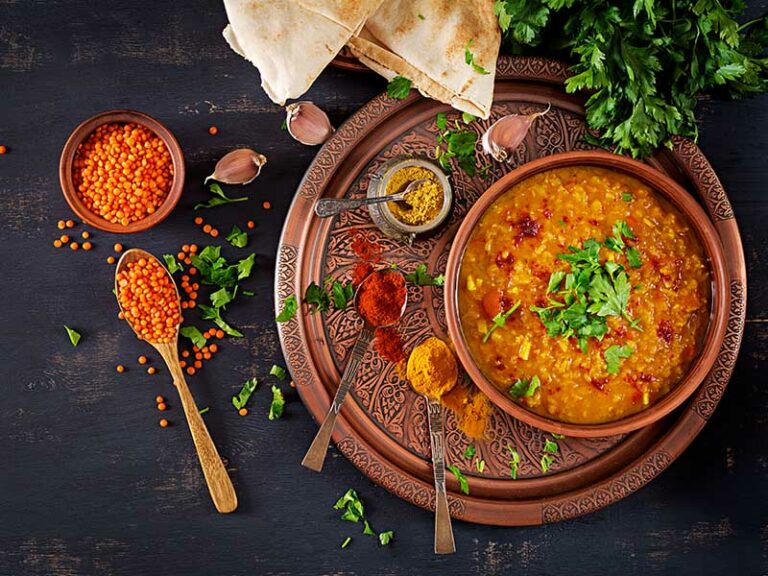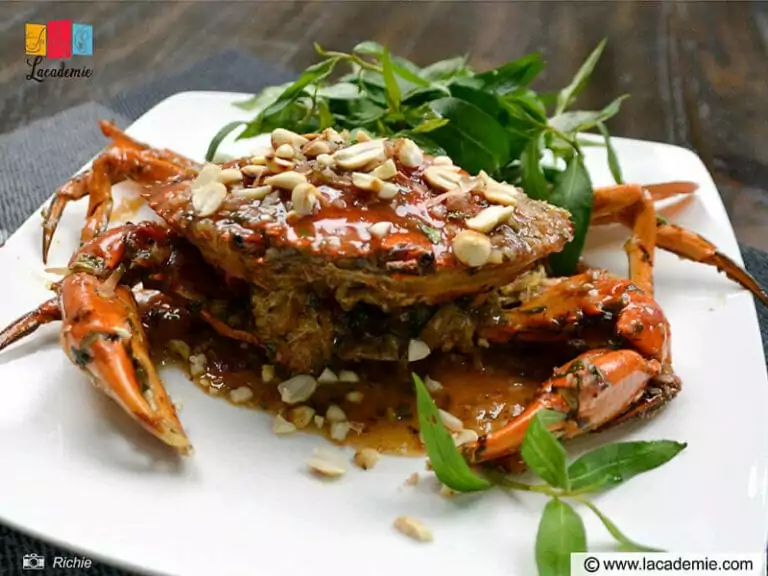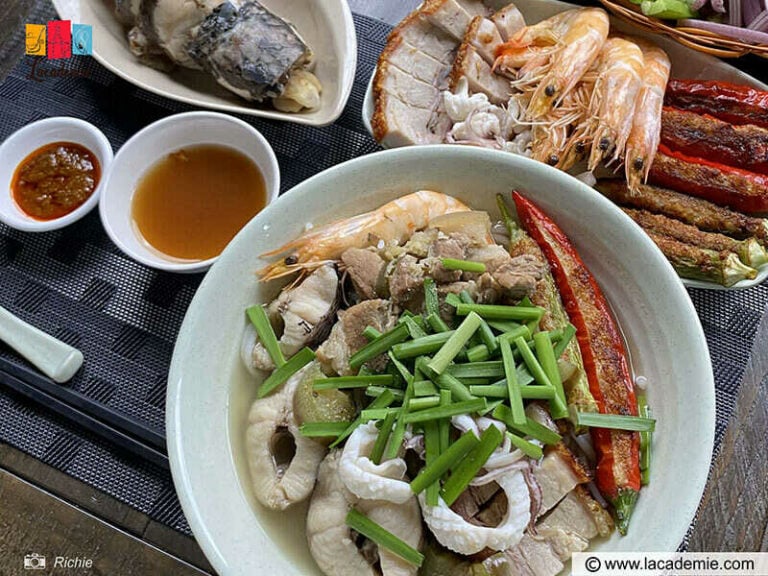Middle Eastern fruits and vegetables are more than just parts of a meal. They bring fascinating flavors and health benefits. I’m inviting you to dive into this world.
Dates will sweeten your palate, pomegranates add a tart zing, and eggplants transform into smoky delights. And you even get to learn about the rich history behind these ingredients and unlock their hidden nutritional treasures.
These insights can elevate your culinary experiences, imbuing them with authenticity and diversity. So, take a moment to explore this enticing world.
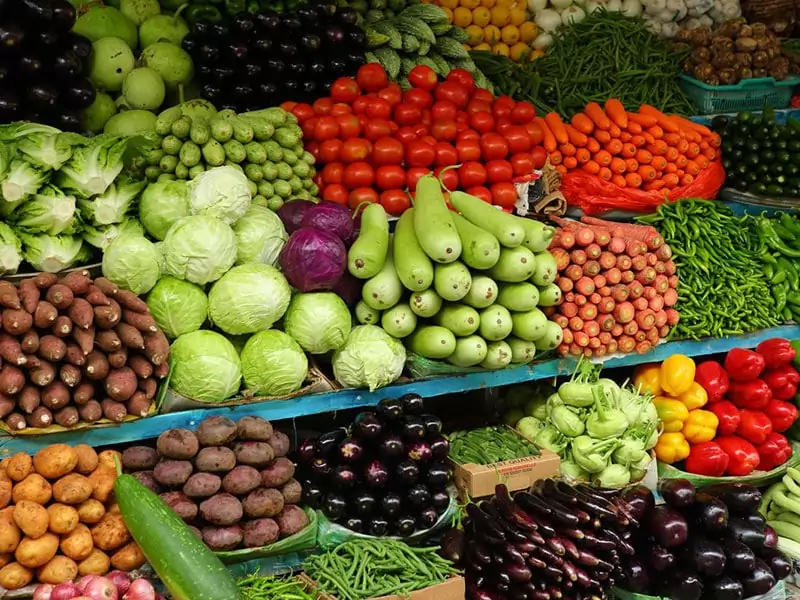
Fruits
1. Dates

Dates, known as “Tamr” in Arabic, have a deeply rooted history in the Middle East, extending across centuries, and are traditionally grown from Iraq and Arabia to north Africa and Morocco.
There are numerous varieties of dates, like Omani, Ajwa, Deri, and Medjool. Dates range from yellow and amber to reddish or dark brown as they ripen.
Beyond nutrition, dates hold significant cultural symbolism, closely associated with Islam and Muslims. They are rich in natural sugars, offering a nutritious energy boost that is especially appreciated during Ramadan. [1]
I once had dates and milk in the Middle East as a traditional first meal when the sun sets in this holy month. The locals also say eating dates before soup or salad enhances the digestive system after a day of fasting.
2. Pomegranate

Pomegranates, a popular Middle Eastern fruit, have always fascinated me with their ruby red seeds and multifaceted flavors. Each variety carries its unique appeal. They play a central role in many dishes and beverages in the Middle East, with their antioxidant properties making them a superfood.
For instance, the Haku Botan presents an intriguing contrast between its white flower and sour fruit. Meanwhile, the Myatadzhy, a winter variant from Turkmenistan, offers a rich, sweet, and nutty taste that feels like a treat.
Then, there’s the Red Acco from Israel, ripe in the late summer with soft seeds, or the seedless Vkusnyi with its bright red juice and balanced sweetness in October.
Eversweet and Liffani Sweet from Lebanon continue the trend with soft seeds and a sweet taste. On the other hand, the Granada provides a mix of sweet acidic flavors and dark red juice without any seeds.
3. Lemon

While lemons may not originate from the Middle East, they are crucial in this region’s culinary scene. Despite the question of whether lemons are fruits or vegetables, they are essential in Syrian, Lebanese, and Jordanian cuisine.
Salty preserved lemons acquire a yellowy-brownish hue and become a staple ingredient, especially in Moroccan and Persian kitchens.
4. Oranges

Oranges are a fascinating fruit thriving best in moderate temperatures, between 59.9 and 84.2 °F. The Middle East is well-known for cultivating the Jaffa orange, locally termed “Shamouti.”
I still remember its uniquely oval shape, deep orange hue, and sweet yet subtle flavor. It’s a fruit with few seeds, covered by a tough skin that protects its delicious interior.
Among countless orange variants, there are two other prominent orange varieties from this region: the Navel and the bitter orange. The rich vitamin C content in these oranges is a lifesaver for me during winter, boosting my immune system to new heights.
5. Fig

Figs and Middle Eastern cuisine have been long-standing partners. Each country has its own fig variant. Ficus Carica is the oldest among them, having been around since 4000 – 5000 BC. [2] These soft, squishy fruits are nature’s hardy soldiers, effortlessly withstanding seasonal droughts.
Studded with crunchy seeds, figs have a honey taste with a subtle berry note. I’ve seen them in numerous dishes, from salads to brewing into a beverage. The dried ones have a delightful concentrated sweetness and chewy texture, suitable as a snack.
6. Watermelon

Watermelon, or Bateekh in Arabic, is important to my diet. Its origins trace back to the Nile Valley, yet now it’s cultivated in tropical and subtropical regions. This juicy fruit, composed of 92% water, offers an incredible range of varieties: more than 1,200 types!
Besides its refreshing taste, watermelon helps skin and hair care, thanks to its vitamin A content. The amino acids “citrulline” and “arginine” also aid muscle soreness and circulation. This fruit also has several eye-protecting compounds: beta carotene, vitamin C, and zeaxanthin. [3]
7. Mulberries
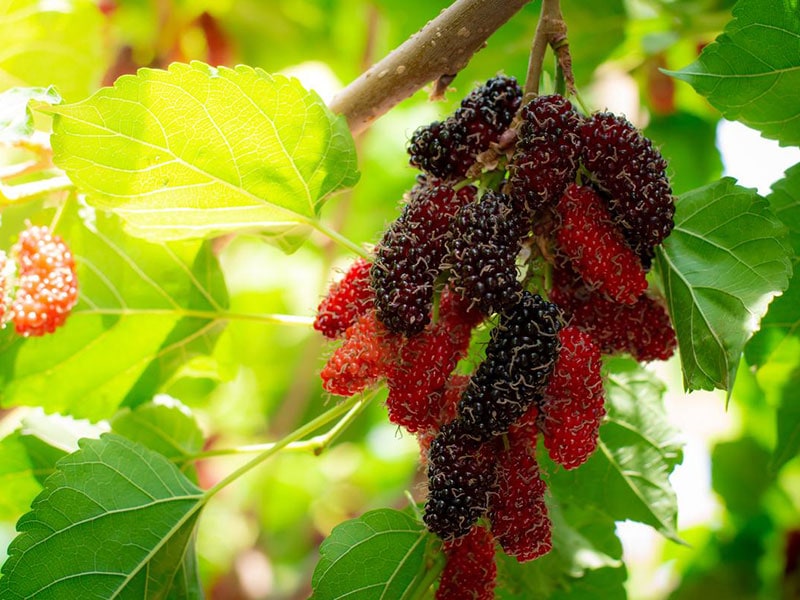
Mulberries, or Toot in Arabic, originate from the Middle East, Indian subcontinent, and Northern Africa, later finding their way into Europe. These oblong-shaped fruits have similar colors to raspberries: red or black.
Tender mulberries have a smoky teak undertone, suitable for whether eaten fresh or made into jams, tarts, pies, and herbal teas.
Beyond taste, they’re iron-rich, a rarity in berries, and can lower cancer and neurological disease risks. And these humble fruits can even tighten tissue, contributing to younger-looking skin. [4]
8. Guava
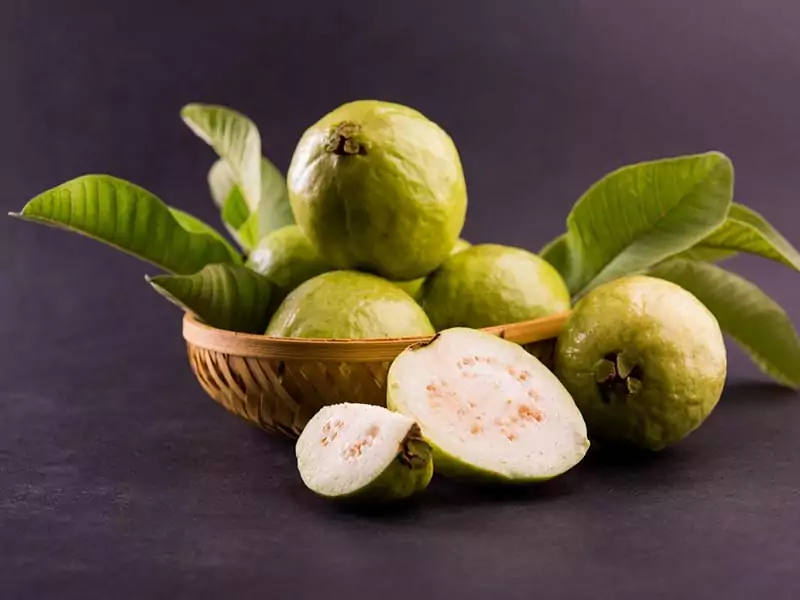
Known as “Amrood” in Arabic, guava has an inviting flavor, whether eaten raw or used in fresh juice, jams, preserves, marmalades, and candies. I remember the first time I bit into its crisp flesh, hidden under green, slightly bumpy skin.
Over time, guava ripens into colors of yellow and almost maroon. While its aroma is like a lemon, the pale pink or white flesh and juice are mildly sweet.
Guava doesn’t only taste good, but it’s also a nutrition superhero. It’s packed with vitamin B9, essential for DNA synthesis and repair, alongside vitamins A, B, and C. Moreover, its high content of potassium helps regulate blood pressure. [5]
9. Grape
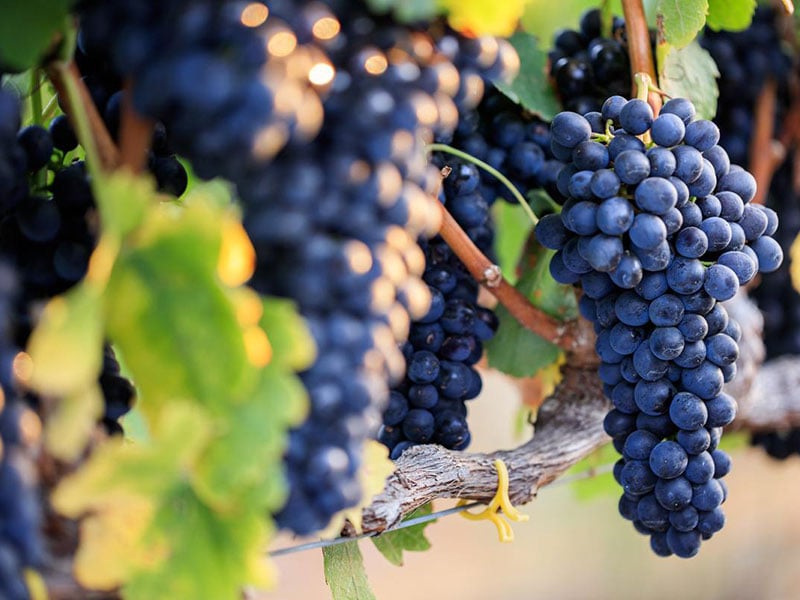
With roots deeply entrenched in the Middle East, grapes have a long lineage stretching 6,000–8,000 years back. Still, this region only has limited areas known for wine-making through grapes.
The texture varies based on different varieties of grapes, with most being soft and juicy, while some are slightly crunchy. The color palette, ranging from green and red to purple and black, is as diverse as their flavor profiles, from sweet to sour.
Inside each grape is a treasure trove of nutrients: fiber, protein, fats, and carbohydrates, besides calcium, potassium, iron, magnesium, sodium, phosphorus, zinc, and vitamins K and C. [6] I was surprised when I first learned grapes are botanically classified as berries.
10. Apricots
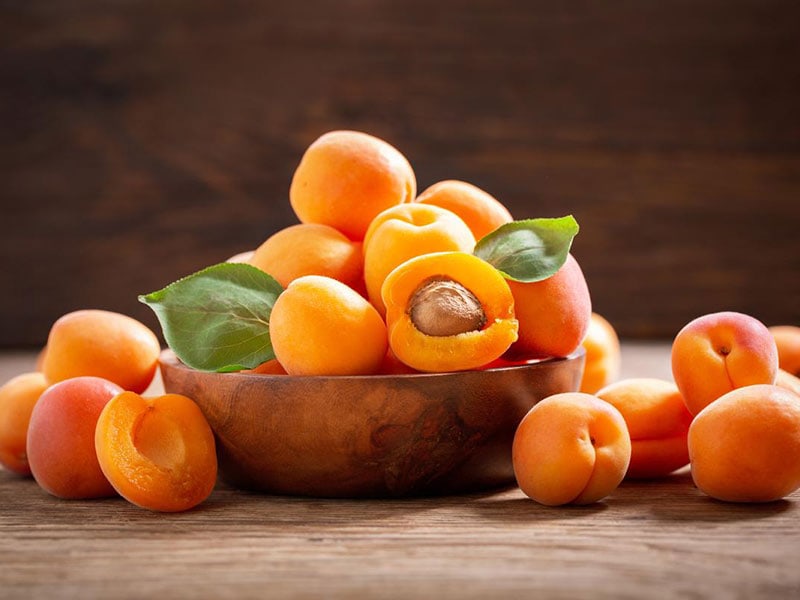
Popping into English in the 16th century, apricots are from the genus Prunus. This stone fruit has a peachy sweetness with a slight tang, and its pale yellowish-orange color can brighten any day. I still remember the succulent flesh covering a seed under the soft, velvety skin.
Ripe apricots are delicious on their own. But dried apricots have intensified their natural sweetness, creating a different snack! I once had Qamar al-Din, a thick apricot drink, during Ramadan Iftar.
11. Almond
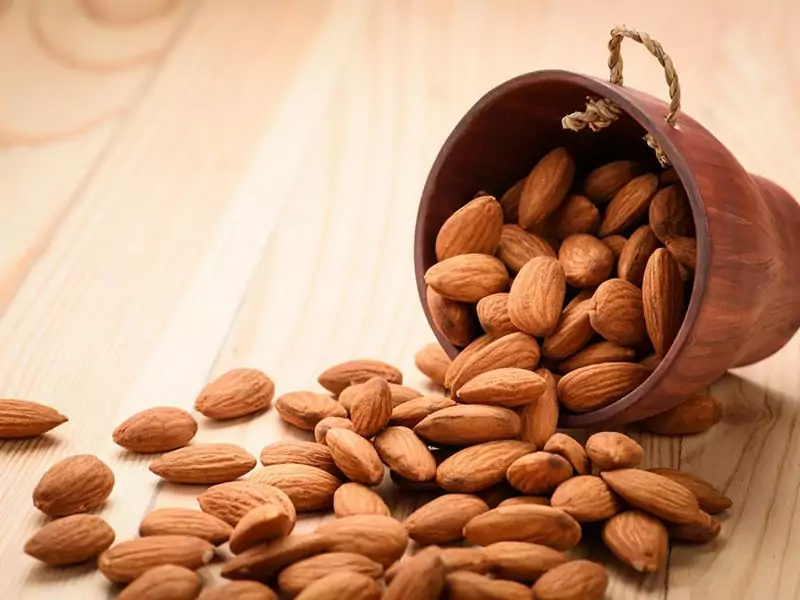
Almonds, a species of trees native to Iran and neighboring regions, have become a staple in my kitchen. Known for their sweet, nutty seeds, they are a pure indulgence, especially the butter almond variety with a richer taste.
But it doesn’t stop at seeds. The green, unripe fruit has an edible, still soft interior with a somewhat sour punch. In the Middle East, a simple dip in salt or pairing with dates perfectly balances the sourness.
Almonds are only available from mid-April to mid-June in the Northern Hemisphere. So, I suggest pickling or brining these fruits to extend their shelf life.
12. Plum

Part of the Prunus species, plums offer a mix of sweet and sour tastes. And here’s a tidbit: the tartness mainly comes from the reddish-purple or purple skin, which also comes with a brownish-gray tinge.
Did you know about Janerik, the sour green plums? They’re a hit street snack in the Middle East, reminding me of grapes because of their size.
Then there’s the Blue Damson plum, smaller with a round or oblong shape, cloaked in deep purple to black skin. Its spicy, tart, amber-like flavor is quite unique! And if you let them dry out, you get prunes.
13. Muskmelon
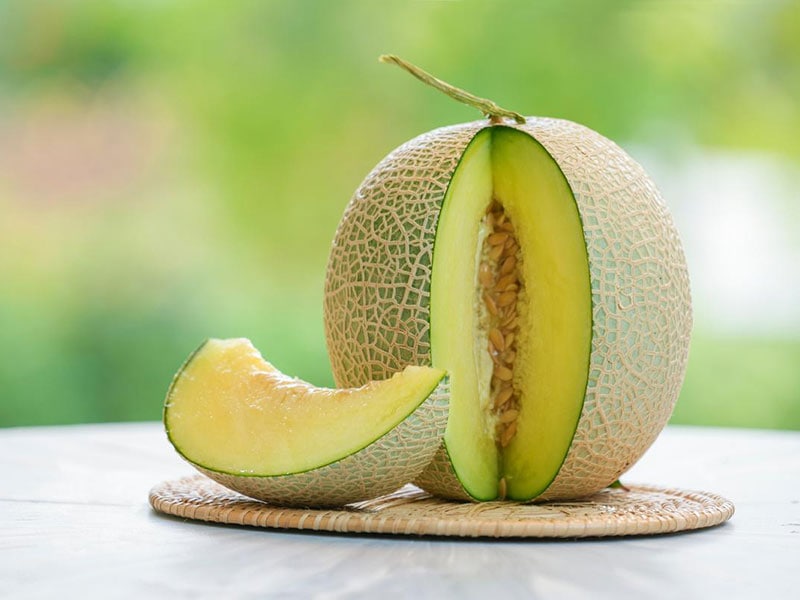
Muskmelon, or Cucumis melon, is a member of the Cucumis species. People often mistake muskmelons for cantaloupe. When you cut one open, it reveals sweet or relatively bland flesh.
Each melon is a unique experience: Sometimes, you get a musky aroma, and other times there is no scent. And the rind might surprise you, appearing smooth, wrinkled, or ribbed. Most of the time, muskmelon refers to those with a musky aroma and netted rind.
Today, the Ananas variety is a Middle Eastern favorite: large, nettled fruits filled with creamy white flesh. Each fruit can weigh anywhere between 6.6 to 8.8 pounds! What makes it stand out is the notable pineapple-like aroma. And the flavor is sweet, tropical, and distinctly floral.
14. Quinces
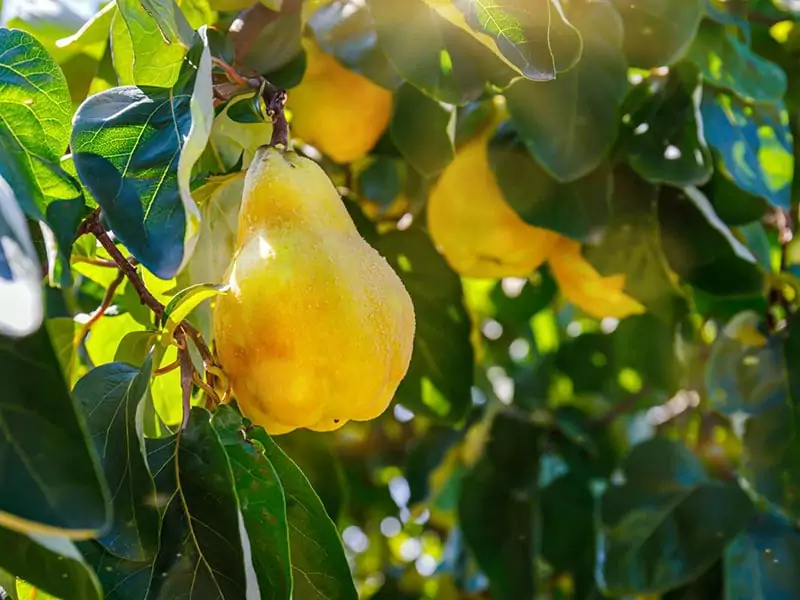
Quinces hail from the unique genus Cydonia within the Malinae subtribe of the Rosaceae family. Like pears, they trace back to the Middle East, where their cultivation began.
When immature, this pome fruit is green, with dense gray-white fine hair. As it ripens, it becomes a bright golden-yellow shade with an aromatic scent. The hard texture and the tart, astringent taste make quinces hard to eat raw, even when ripe.
Rest assured, the seeds won’t harm you unless consumed in large quantities. Quinces are often turned into marmalade, jam, paste, or alcoholic beverages. And in the Middle East, the locals traditionally pair them with meat to make a hearty stew.
15. Eggplant

I am particularly fond of a versatile vegetable called the eggplant. From the whitest to the deepest purple, its colors alone are enough to capture your attention. I’m quite surprised to learn that eggplants are berries. Yet, they are treated as a vegetable in cooking.
Many cooks love this egg-shaped fruit because of its white flesh and spongy, meaty texture. I’ve encountered eggplants in numerous Middle Eastern and Mediterranean dishes, from the stuffed Turkish Karnıyarık to Greek and Musakka in Turkey, Greece, and the Levant.
The Iranians step further, blending eggplants with whey for Kashk E Bademjan or tomatoes for Mirza Ghassemi, even transforming it into a delightful stew. My favorite is Arab Baba Ganoush, where roasted eggplants are combined with lemon, tahini, and garlic.
16. Bell Peppers
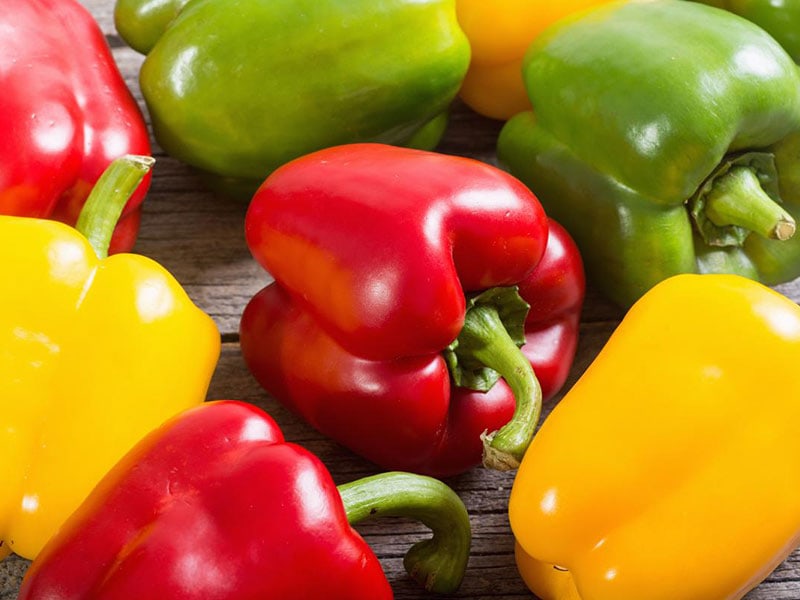
Bell peppers, fruits of the Grossum group, are a color fest, with red, yellow, orange, green, white, chocolate, candy cane striped, and purple shades. I know you may be thinking, “Fruit? Really?”. But botanically, they are berries, even though they’re mostly used as a vegetable in cooking.
Bell peppers add a satisfying bite to any dish, from the crisp crunch of the raw pepper to the softer texture when cooked. Flavors range from slightly bitter and grassy in green and purple peppers to sweet and fruity notes in orange, red, and yellow varieties.
I also have so much fun experimenting with these peppers. There’s always a new way to incorporate them into meals: grilled, roasted, or sautéed. In the Middle East, these peppers appear in various dishes and are sometimes even enjoyed raw.
Vegetables
17. Olives

During my Middle Eastern trip, I learned olives are more than vegetables. They are part of breakfast, lunch, and dinner. This vegetable is also a source of essential cooking oil in the Middle East.
The Souri variety, particularly popular in Lebanon, Israel, the West Bank, Gaza Strip, and Jordan, is the most commonly cultivated. Raw olives may have a touch of bitterness. However, a nice bath in salt or brine mellows them down, and they are ready for dishes.
18. Cabbage

Cabbage, a biennial plant, typically weighs between 1 to 2 pounds and comes in shades of green, red, or white. The smooth-leafed, firm-headed green ones are most common, while the smooth-leaved purple and crinkle-leafed savoy ones are less so.
The taste of cabbage is unique: fresh and peppery. Both white and red cabbages are also popular in the Middle East. White cabbage is excellent for braising or cooking, while red cabbage is perfect for quick dishes or chopped into small pieces for spicy recipes.
The locals in the Middle East also like to pair cabbage with meat dishes. A common dish is Mujadara, often served with rice.
19. Spinach

Spinach is a leafy green flowering plant from central and western Asia. This common vegetable is full of alternate, simple leaves in an ovate or triangular shape. You can munch on these leaves fresh or preserve them through canning, freezing, or dehydration.
I’ve always appreciated spinach’s mild, slightly sweet taste when raw. But cooking brings out a more acidic and robust flavor. In fact, steaming spinach can even reduce its high oxalate content.
Packed with zeaxanthin and carotenoids, this vegetable helps flush free radicals from the body to prevent cancer. It can also reduce blood sugar, aid in weight loss, and alleviate hypertension. A cup of cooked spinach provides around 25% of your daily vitamin intake, including vitamin C. [7]
20. Chard

Chard, also known as Swiss chard, is a vibrant green leafy vegetable full of nutrition. I always use chard raw in salads, stir-fries, and wraps. And here is a personal tip: boiling the leaves and stalks can reduce the bitterness and enhance their natural flavor.
Two notable types are the Flavescens and the Cicia group. In the former, the large leaf stalks are often prepared separately from the leaf blades. On the other hand, the latter, also known as the leafy spinach beet, has green or reddish leaf blades.
During a visit to Lebanon, I got to try Choucroute, a Sauerkraut variant, paired with chard. In the Middle East, Coulibiac chard is a popular choice, from the Israeli dish, Chouckro (chard and potatoes fried in oil) to the Turkish way of cooking chard with olive oil, lemon juice, and salt.
21. Onions

Onions are iconic in many cuisines, particularly in the Middle East. This region proudly claims one of the earliest records of onion cultivation. Here’s a tip when dealing with larger onions: remove the first chewy layer after peeling the skin for the best culinary results.
Each onion has a signature pungent taste, varying from strong and hot to sweet, bitter, acidic, earthy, or salty. The colors also range widely: white, pale yellow, orange, pink, and purple, all encased in a satisfyingly firm texture.
There are three main onion varieties in the Middle East: the Egyptian, the Syrian, and the Lebanese. The yellow-hued Egyptian and Syrian onions are small and sweet, perfect for raw consumption. And the last one has large, predominantly green bulbs.
22. Garlic

Garlic is a must-have cooking ingredient, with its unmistakable pungent, spicy, and earthy taste when raw. The yellowish bulbs under the skin become a mellow, nutty flavor upon cooking, transforming complex dishes.
But did you know that roasting garlic takes it to a new level? This method gives garlic a creamy texture and a mild, nutty taste. Middle Eastern cuisine is fond of garlic; its distinctive flavor consistently shines in many dishes.
Beyond its culinary prowess, garlic is a detox champion, promoting glutathione production by various liver enzymes. Plus, it’s low in calories and high in vitamin C, vitamin B6, and manganese. [8]
23. Carrots

Carrots, native to the Middle East, have a colorful history. They journeyed from what is now Afghanistan to Europe via the Silk Road. Today, you find them on tables worldwide. I love their crunchiness when raw.
The vibrant color of carrots impressively holds even after cooking. Many cultures, including Chinese, Indian, Turkish, and Greek, utilize carrot juice for medicinal purposes.
Even better, carrots aren’t too water-demanding, especially the resilient Persian variant, which thrives between temperatures of 50°F and 90°F.
24. Turnips

Turnips, also called white turnips, are root vegetables with unique purple and white colors. The purple bits are the root parts that push through the ground. Every part is edible, from the roots to the leaves ( called turnip greens).
Turnips taste similar to sweet, peppery, and nutty potatoes but with a crunchier or chewier texture. Lebanon, Jordan, Syria, Palestine, and Egypt often pair with meats such as Kebabs, Kibbeh Nayyeh, and Shawarma.
Meanwhile, Turks use them in salads, and Iranians saute them with garlic and onion. When selecting turnips, I choose those with firm, bright green leaves and smooth, firm roots. As for how to prolong turnips’ shelf life, you can keep them for up to a week at room temperature.
25. Beets

Beets, or beetroot in British English, often refers to the taproot portion of the beet plant. This vibrant root vegetable was first domesticated in the ancient Middle East, mainly for its leafy greens. Although both the leaves and the taproot are edible, the latter’s earthy and slightly sweet taste is the best.
Moreover, beets often have a stunning reddish-purple hue, although they can also come in white, golden, or even a rainbow of colors. They’re filled with essential vitamins and minerals, which are excellent for those with type 2 diabetes.
In my experience, their health benefits, like lowering blood pressure and anti-inflammatory properties, make them a winner in many dishes. [9]
26. Squash

I’ve always been fascinated by the number of squash varieties. The Cousa Magda is outstanding as a favorite in the Middle East. This summer squash, available from June through summer, is a blocky, pale-green, tapered fruit with smooth, shiny skin.
Its size is perfect at 3-4 inches long, and the sweet, nutty, Zephyr-like flavor is truly captivating. It’s the top choice among all Middle Eastern-style squashes, ideal for roasting, sauteing, and grilling.
27. Tomato

In my culinary journey through the Middle East, tomatoes have always been an indispensable part of this cuisine. They appear in many dishes, such as salads, kebabs, mezze, stew, broth, and tagine.
Their vibrant red hue represents their nutritional value. Tomatoes contain vitamins A and C, folate, potassium, fiber, iron, and antioxidants such as lycopene. Plus, they’re packed with dietary minerals: phosphorus, calcium, manganese, magnesium, zinc, copper, and selenium. [10]
28. Okra

Okra, known in Arabic as “Bamia” or “Bamya,” is a capsule-shaped vegetable hosting edible seeds of about 7 inches. It originated from tropical Africa and boasted a history of cultivation in the Middle East and India.
Okra’s flavor is quite unique as a mild and grassy blend of green beans and asparagus with an earthy undertone. When cooked, they can release a slimy substance. But here’s my trick: Soaking them in vinegar before cooking and grilling/sauteing them at high heat reduces the slime.
While okra’s texture is crunchy when cooked briefly, slow cooking imparts it with a tender quality. This versatile vegetable fits well into numerous Middle Eastern dishes.
29. Cucumber

Cucumbers always play a starring role in Middle Eastern cuisine. These cylindrical or spherical fruits are not only eaten raw but also star in many dishes, like Jajic, a popular cucumber yogurt salad in this region.
When biting into a raw cucumber, you can’t miss its crunchiness, blending sweetness with a hint of bitterness. The green skin is also edible. Moreover, there are three main types of cucumber: slicing, pickling, and seedless. And these refreshing variants contain 95% water!
30. Zucchini

Zucchini is a mild, slightly sweet vegetable cherished in Middle Eastern cuisine, whether raw or cooked. It has an appealing contrast between its firm, dark green, slightly crunchy skin and the softer, pale yellow flesh.
Zucchini is also healthy, full of compounds like zeaxanthin that help combat oxidative stress. And its high vitamin B6 content aids in regulating blood glucose. This vegetable also improves your eyesight. [11]
Among the many ways I’ve savored zucchini, the stuffed version is a Middle Eastern gem well-loved in other countries.
31. Parsnip
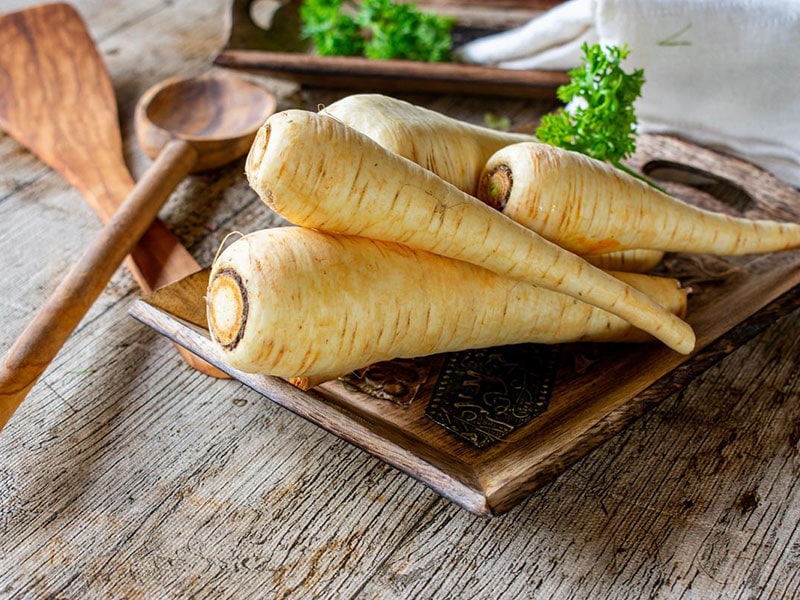
Parsnip is a close cousin to carrot and parsley in the root vegetable family. This cream-colored, long taproot vegetable is my winter favorite.
Its sweeter, nuttier flavor is enhanced by frost and balanced by hints of peppery earthiness. The fibrous, woody texture with a slightly spicy kick makes raw parsnip an ideal partner for hummus.
Besides taste, I appreciate the fiber in parsnips, which is beneficial for balancing blood cholesterol levels. Plus, they’re a great source of potassium and vitamins C and B6. As a bonus, they have anti-inflammatory and anti-fungal properties. [12]
32. Potatoes

Potatoes are a common guest in Middle Eastern feasts. Each bite offers a subtly sweet and mild taste. Yet, their texture varies from mealy and starchy to waxy, sloughing, and firm. Moreover, they go well with various Middle Eastern spices.
Potatoes come in different sizes and varieties. The yellow variants have thin, gold skin with yellow flesh, whereas the red-skinned one offers a pale interior. There are also white-skinned potatoes and exotic purple or blue ones with matching vibrant flesh.
33. Sweet Potatoes

Despite the name, sweet potatoes are only distant relatives of the common potato. What sets them apart is the delightful contrast between their brown skin and their vibrant innards, ranging from bright orange to pale cream.
You may wonder whether you can eat sweet potatoes raw, but its creamy texture and sweet-spicy taste complements savory dishes the best. Grilling, roasting, or filling them with spices is typical in Middle Eastern cuisine.
I enjoy the darker ones, often mistakenly called “yams” in some North American regions.
34. Yam
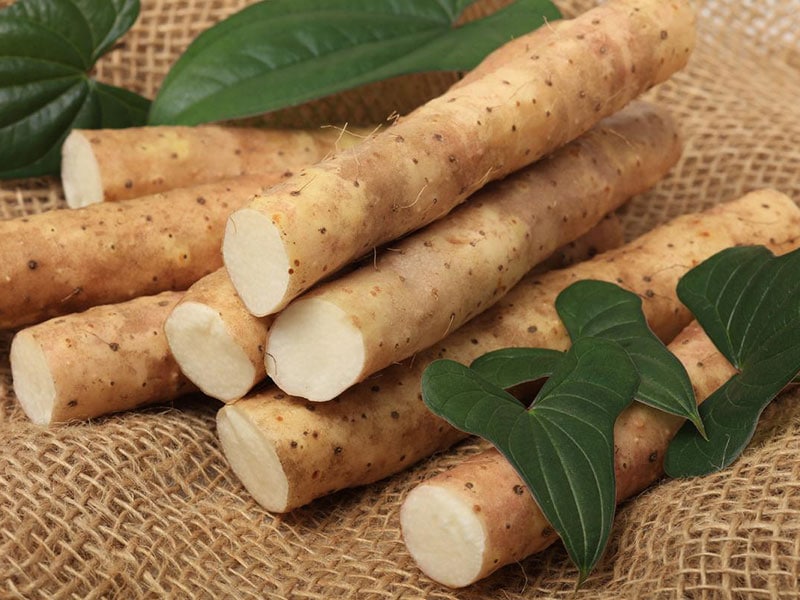
Yams are the edible tubers in the plant genus Dioscorea. They are domesticated independently in Africa, Asia, and the Americas. Some caution, though, is that some varieties can be toxic.
When properly prepared, yam’s earthy, neutral taste becomes a canvas for flavors. Although lightly sweet, this vegetable is ready to embrace whatever seasonings.
35. Ginger

Ginger, a pale yellow spice, fills my kitchen with a spicy aroma whenever I want to whip up Middle Eastern dishes. It’s a staple in Middle Eastern cooking and a frequent spice in Iranian cuisine, with a slightly peppery and sweet flavor.
Surprisingly, 44% of the global supply in 2019 came from India, with 4.1 million tonnes [13], even though Southeast Asia is ginger’s original home. Traders carried this spice to the Middle East and used it as a spice and local medicine.
Locals commonly use ginger in fresh, dried, or pickled forms to add flavor during and even after cooking.
36. Radishes

Radishes are edible root vegetables from the family Brassicaceae. Asia first domesticated these crisp, crunchy root vegetables before Roman times, and they have since found a place in kitchens worldwide.
Radishes come in many sizes, tastes, and colors. However, their signature intense, slightly spicy flavor and crispy, crunchy texture, when enjoyed raw, remain constant, making them a favorite in my salads.
Besides, radishes are rich in vitamin C, antioxidants, and minerals like calcium and potassium. Eating radishes even helps lower high blood pressure and reduces heart disease risks, all thanks to their natural nitrates that improve blood flow. [14]
37. Celery

With its distinct earthy flavor, celery is a frequent ingredient in Middle Eastern cuisine, adding a unique taste to the dishes. Primarily grown for its thick stalk, this vegetable boasts an intense green in both leaves and stalks.
No matter which variety of celery, I relish its juicy, slightly salty stalks, offering a crunchy, fibrous texture. With a good source of Vitamin C, celery is great for boosting your immune system. Plus, its fibrous nature even helps with weight loss.
38. Kale

Kale, affectionately known as leaf cabbage, is the main element of many salad bowls, particularly in Middle Eastern dishes, thanks to its green or purple leaves. These leafy greens offer dry, crunchy, and robust leaves with a strong earthy flavor.
The leaf is about the size of your hand. Also, it’s noteworthy that mature kale can develop a bit of bitterness. Healthwise, kale is better than spinach, offering four times the vitamin C and twice the selenium content, not to mention vitamin E and beta-carotene. [15]
Consuming kale is also a great way to protect yourself from heart disease.
39. Fava Beans
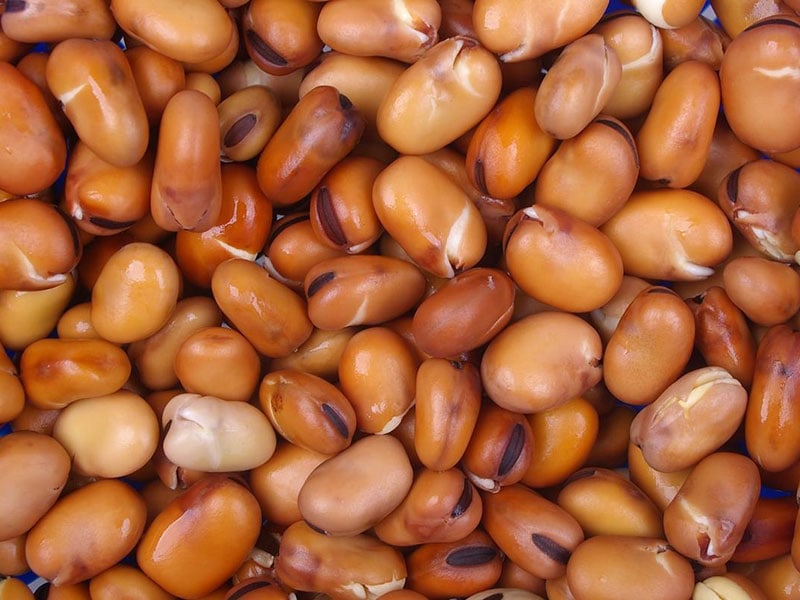
Fava beans are creamy, nutty, sweet, and slightly bitter legumes that have become a staple in my kitchen. Most often eaten in Europe and North America, they’re cooked into wholesome soups and stews or served as a comforting side dish.
Here’s something you might not know, each fava pod can house about 20 seeds, greenish-yellow in color and reminiscent of lima beans in taste. In the Middle East, they create hearty, savory stews.
In Iran, fava accompanies rice; as for Turkey, it adds a delightful crunch to salads. Just grind them into flour to make pancakes and fritters. Fava beans can aid weight loss, boost immunity, lower cholesterol and blood pressure levels, and even help manage Parkinson’s symptoms. [16]
40. Chickpeas
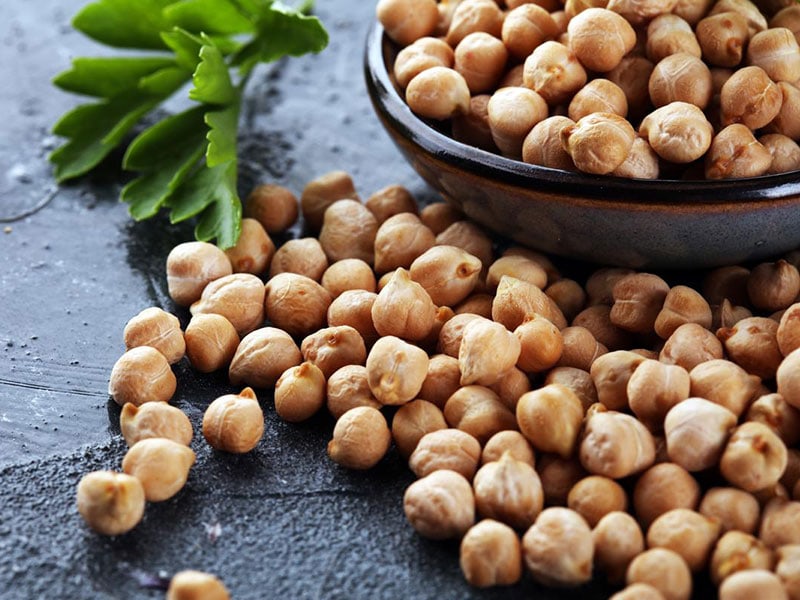
Being one of the world’s oldest cultivated legumes, chickpeas are particularly popular in the Middle East, dating back 7,500 years. Their mild, nutty flavor, tinged with a hint of earthiness, makes chickpeas a versatile addition to many traditional dishes.
You can pair them in stews, salads, and soups across the Middle East. This pea color palette is just as diverse as their culinary uses, ranging from green when plucked early to hues of tan, beige, and even dark brown to black.
Grown predominantly in the dry climates of India, Iran, and the Middle East, about 75% of the world’s chickpeas are of the smaller desi variety.
41. Black-Eyed Peas
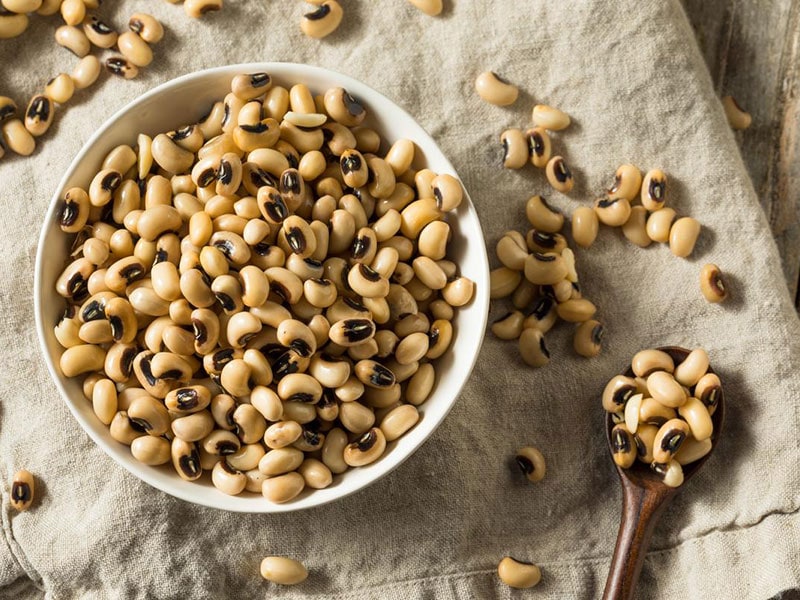
Black-eyed peas have been my favorite in the kitchen for years. Also known as black-eyed beans, they’re a medium-sized, edible legume grown globally, a versatile subspecies of the cowpea.
The California Blackeye commercial variety has a distinctive pale-colored eye that can be black, brown, red, pink, or even green. They’re small, varying in size and transitioning from green when fresh to brown or buff when dried.
These earthy legumes have a dense, creamy consistency similar to white beans. Called ‘Lobia’ in Egypt, they’re cooked with onions, garlic, meat, and tomato juice, then served with Egyptian rice with pastina called Shaerya. Also, these peas complement soups, salads, stews, and casseroles perfectly.
42. Lentils

I have a deep admiration for lentils. These small, broadly oblong pods have two seeds no more than 0.24 inches in diameter. Their origins can be traced back to the Middle East, Southeast Europe, and Southwestern Asia, and they’re now grown commercially across the globe.
Lentils often come in many colors, from slate green, brown, and black to reddish-orange, coral, and gold. Each color lends a unique flavor that can be mildly plain, nutty, or even piquant.
Ancient Egyptians used lentils to make bread, and these tiny gems have been starring in my kitchen in the form of lentil salad, lentil pilaf, lentil dahl, and lentil soup, a classic Middle Eastern dish.
43. Split Peas
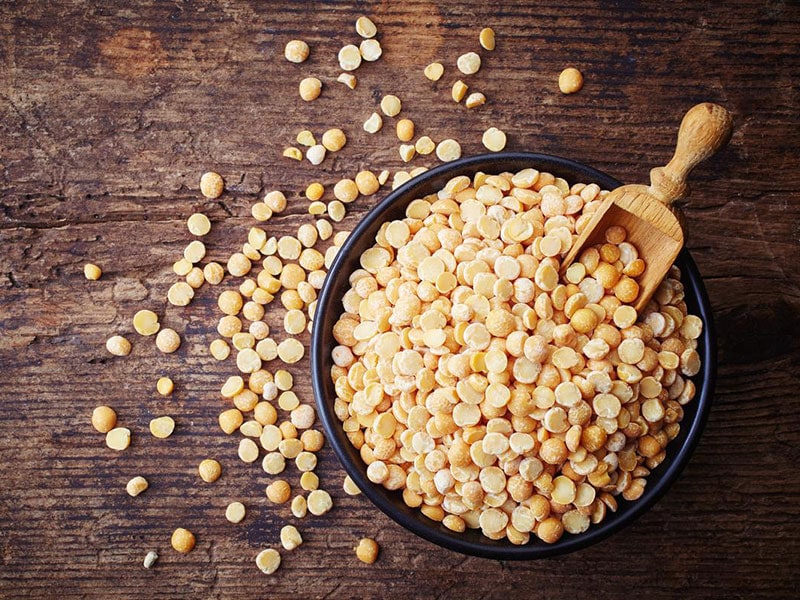
Split peas, dried, peeled, and split seeds from the pea plant (Pisum sativum), are a culinary staple in many countries. As a type of legume, they’re wonderfully nutritious, providing a fantastic source of plant-based protein.
These peas can range from green to yellow, each carrying a different taste. Commonly, the green ones offer a sweet flavor, while the yellow ones lean toward a mild profile. They possess a creamy, soft, granular texture once cooked.
In addition, split peas are great for pairing in a spectrum of dishes, from Indian and Middle Eastern soups and stews to salads and dips.
Unique Ways To Cook Fruits & Vegetables In The Middle East
Vegetables

Stuffing
In the realm of stuffing vegetables, an exceptional example from the Middle East is Dolma or Mahshi. This method involves hollowing out various vegetables like eggplant, bell peppers, tomatoes, zucchini, and even onions, then filling them with a flavorful mixture.
The stuffing usually consists of rice, minced meat, herbs, and spices, but it can also be purely vegetarian. These stuffed parcels are then cooked slowly until tender, absorbing all the aromatic flavors from the filling.
Cooking stuffed vegetables is an art form passed down through generations in Middle Eastern households. This method allows each vegetable’s unique taste and texture beautifully complemented by the stuffing.
Pickling
Pickling is a time-honored tradition in this region. It involves immersing vegetables in a solution of vinegar, water, and salt. Some well-loved pickles include cucumbers, turnips, and beets, often colored with beetroot juice for a vibrant pink hue.
Apart from these, almost any vegetable can be pickled: okra, eggplant, and various peppers. These pickles are a tangy accompaniment to meals, enhancing the overall flavor and providing a contrasting note to rich dishes. They are also appreciated for their long shelf life.
Fruits

Using Fruits In Savory Dishes
In Middle Eastern cuisine, fruits are not only a dessert or snack but also play an essential role in savory dishes. One significant example is the use of pomegranates. Pomegranate seeds and juice are incorporated into various recipes to balance rich, savory flavors with a unique tanginess.
Pomegranate molasses, a syrup from reduced pomegranate juice, is a popular ingredient in dishes like Fesenjan, a Persian chicken stew. This creates a harmonious blend of savory, sweet, and sour flavors, elevating the entire dish.
Using Dried Fruits
Dried fruits have a special place in Middle Eastern gastronomy. Dried fruits like dates, apricots, figs, and raisins are added to many dishes for a touch of sweetness.
A signature example is the use of raisins in pilaf, a type of rice dish. Here, the sweetness of the raisins contrasts beautifully with the savory, spiced rice.
Similarly, dates, figs, and apricots are often incorporated into meat dishes or stuffed with nuts and served as a part of a mezze platter.
FAQs
Make Your Life Healthier With These Fruits And Vegetables
Middle Eastern fruits and vegetables are integral to the global culinary landscape, bursting with unique flavors and rich traditions. I am truly excited by their exquisite taste and nutritional profiles, which beautifully represent their uniqueness.
So, if you’re as captivated by these unique offerings as I am, let’s share your opinions. Please hit like, share this article with your peers, and remember to comment with your insights.
References
- Elliott, B. (2022) 8 proven health benefits of dates, Healthline.
- Asaph Goor. “The History of the Fig in the Holy Land from Ancient Times to the Present Day.” Economic Botany, vol. 19, no. 2, 1965, pp. 124–35. JSTOR,
- The health benefits of watermelon (no date) WebMD.
- Bjarnadottir, A. (2019) Mulberries 101: Nutrition Facts and health benefits, Healthline.
- Health benefits of guava: How to use it, nutrition, and risks (no date) Medical News Today.
- McDermott, A. (2019) Are grapes good for you?, Healthline.
- Cynthia Sass, M. (2022) 6 health benefits of spinach, according to a nutritionist, Health.
- Leech, J. (2022) 11 proven health benefits of garlic, Healthline.
- Beetroot: Health benefits, nutrients, preparation, and more (no date) WebMD.
- GR;, B. (no date) Nutrient content of tomatoes and tomato products, Proceedings of the Society for Experimental Biology and Medicine. Society for Experimental Biology and Medicine (New York, N.Y.).
- The health benefits of zucchini and how to eat it (no date) Medical News Today.
- Becky Henne, M.S.U.E. (2022) Parsnips: Packing a nutritional punch, MSU Extension.
- IndexBox (2019) Global ginger market 2019 – U.S. imports increases robustly, turning the country into the most promising market, Global Trade Magazine.
- Radish: Health benefits, nutrients per serving, preparation, and more (no date) WebMD.
- Kale: Health benefits, nutrition, diet, and risks (no date) Medical News Today.
- News: Faba beans may be a natural source for parkinson’s relief: College of Natural Sciences: UMass Amherst (2019) News: Faba beans may be a natural source for Parkinson’s relief | College of Natural Sciences (CNS) | UMass Amherst.

